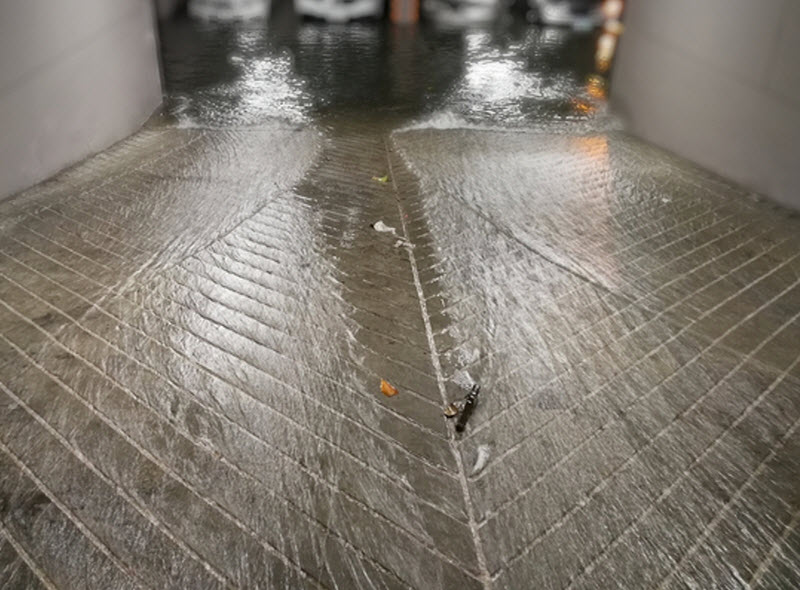
Wild weather is once more wreaking havoc on the eastern seaboard, causing heartbreak for many communities.
Beyond these devastated flood areas, it’s quite common for water to enter basements after heavy rain. Areas such as subterranean car parks and lift pits are often affected by both the rising water table and lateral pressure from the soil, which both push water towards your structure.
Extreme weather may lead to basement flooding, even with quality waterproofing in place. The chance is much higher however if you don’t have appropriate basement waterproofing, or if you have leaks or other waterproofing issues.
Poor drainage may also play a role, allowing water to build up around your structure, rather than flowing away.
To protect your strata, commercial or government property from torrential rain, wild weather and flooding, Danrae Group recommends three key steps.

Precautions before flooding
It’s important to understand the difference between waterproofing insurance, warranties and guarantees to ensure that you have adequate financial protection in place.
Suppliers provide warranties to cover faulty waterproofing membranes and related products, and these may last for 20 or 30 years or sometimes longer, depending on the brand. Guarantees apply to workmanship, and Danrae Group provides a standard six-year waterproofing guarantee with every project, with an option to upgrade.
For this, you specifically need flood insurance and you need to check with your insurance provider that you have the correct type of coverage and amount.
If your waterproofing is in poor shape or is affected by issues such as concrete cancer prior to the flood, you will likely not be covered.
It’s vital therefore that you have both a quality waterproofing solution tailored to your property, and that you maintain it, ideally with an ongoing preventative maintenance plan.

Precautions after flooding
The NSW State Emergency Service (SES) provides safety guidelines for anyone returning to a property after a flood. Whilst designed for major flood incidents, there are some practical tips that also apply for lower impact flooding.
Prior to entering the structure, ensure it’s structurally stable, check for broken windows or other debris, and keep a lookout for asbestos and other contaminants which may have been released through wall or floor damage.
Ensure the power and gas are turned off prior to entering, and any power points, hot water systems, electrical equipment and appliances must be checked by a certified electrician prior to use. You also need to have all gas appliances and bottles inspected prior to use.
Wear suitable and protective clothing including boots and gloves when cleaning up and keep an eye out for slippery surfaces and trip hazards. Destroy all food, medicine and water stored on site.

Remedial basement waterproofing after flooding
To restore basement waterproofing, it’s likely you will need a tailored solution design, waterproofing and remediation.
Prior to starting, you may need a sump pump or other equipment to remove water if it has not receded naturally.
Our team will inspect the area to prepare a solution design and make membrane recommendations. We will seal cracks in floors and walls to ensure the area is watertight, repair any concrete spalling and concrete cancer, remove the damaged waterproofing membrane and replace it with a new waterproofing system.
With in-house tilers, carpenters and electricians, we look after all remedial building work. And we provide end-to-end project management, to deliver a stress-free waterproofing project.
If your property has been affected by torrential rain or storms, please contact us for expert basement waterproofing.
Read More Blogs












 1800 326 723
1800 326 723
